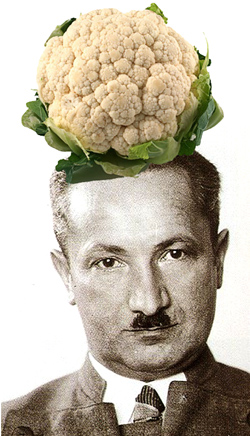missing strategies
30. 11. 2012 // Federico Geller // Kategorie Randnotizen 2012Strategy and tactics are key related concepts that recognise the existence of conflict and the necessity of anticipation for those who take part. Coming from the knowledge of war, they have pervaded all kind of institutional discourses, including those of marketing, art and science, where social confrontations usually remain obscured. Sharing a definition of these concepts and a common understanding of their relationship can be useful to orientate our participation in communication activities that seek for social change.
The concept of ‘strategy’ refers to the development of all the combats all along time and space in a war. For establishing a strategy it must be considered the total force which will be involved in all the confrontations. Each of these it’s a particular composition of forces that enter into a direct exchange. The term ‘tactics’ refers to each singular and direct encounter.
The real development of a war and its combats is not a linear result of the confrontation between two fighting logics, of the strategic lines and the toolbox of tactics defined by those who take decisions in the bands in conflict. To believe so we should dismiss many facts that escape to the plans and hold a teleologic conception of the belic, the political and economic dimensions of reality, where everything would result of the strongest will and the best plan. But in reality, in our most intimate or public struggles, we must deal with both chance and necessity, as well with processes that remain out of reach of our conceptual frames.
“I call a strategy the calculation (or manipulation) of power relationships that becomes possible as soon as a subject with will and power (a business, an army, a city, a scientific institution) can be isolated. It postulates a place that can be delimited as its own and serve as the base from which relations with an exteriority composed of targets or threats (customers or competitors, enemies, the country surrounding the city, objectives and objects or research, etc.) can be managed.”
This is a more extended version of the paragraph of Michel De Certeau quoted during the openning of Steirischer Herbst by Florian Malzacher, who then added:
“Strategies belong to the ones in power. Tactic, on the other hand is the art of the weak, that fights that power: it operates in isolated actions, blow by blow. It takes advantage of opportunities and depends on them, being without any base where it could stockpile its winnings, build up its own position, and plan raids. But we chose the term strategies on purpose, not because we are an institution, and by such perhaps one of the subjects with will and power to which De Certeau refers. But we are also interested in how the consequent use of certain tactics, the combination of certain tactics, the invention of tactics follow strategies or form strategies.”
(complete text in http://truthisconcrete.org)
If we want to find consistent antihegemonic strategies from the political to the artistic, and viceversa, we can’t wait that these will emerge from the tactics themselves. We can learn many things from collecting and comparing tactics, in order to increase our potential toolbox when new tactics are needed, but we will have to jump to a wider dimension where those tools are also included. Tactics will be there but in relationship to other elements, other social identities and in another scale of time and space. Every tactical action belongs already to a strategy: to a scheme of action that has set his strategic goals. Of course, it may be not your own but other people’s strategy. When we don’t think for ourselves other brains are thinking for us. The weak playing tactic games that can offer a transient resistance or a moment of surprise to the strong, but are devoid of any strategic accumulation, on the long term help the latest to increase their financial, cultural and belic power.
When a bunch of people, weaker or stronger, decide together a specific tactic, they share already a conceptual frame of conflicts and desires that belong to the strategic dimension. We can then see strategy and tactics as two different scales of decision in a struggle, which relationship will have some conceptual challenges similar as those present in the problematics between local and global, abstract and concrete or acting and thinking.
In our development as individuals, which biologists call ontogeny, action is previous to thought. Babies start to explore the world before thinking about the world. The same discovery of having hands need the hands to move previously. The same happens in the microscopic level: hazardous movement of cell structures are a precondition for the occurrence of functional connections. Neurons are active in early stages of brain development before specific synapsis are wired. Though the ontogenic origin of learning through action is an universal experience, once we understand that our actions may have some consequences, thinking becomes an increasingly important action. Thinking is an action too, but it requires other kind of actions to avoid circular compulsions to repetition or the danger of loosing ourselves in the rethorical cauliflowers that Max Ernst so much abhorred. On the other hand, the experiences and lessons we “collect” as knowledge of more complex processes are not just an original product of our own personal actions and reflexions but mainly from others. Our strategic and ideological constructs, then, are not an emergent construction of our tactical experiences and the reflexion and generalisation on them, even when they have the chance of enjoying a consistent totality. They are also the result of confrontations in the theoretical field.
The question for being concrete is not to keep just in the tactical dimension, but making a stronger attempt to discuss strategies both for the “inside” of the cultural-artistic field itself and its “outside”, its connections with human and nature exploitation, which means with war.



